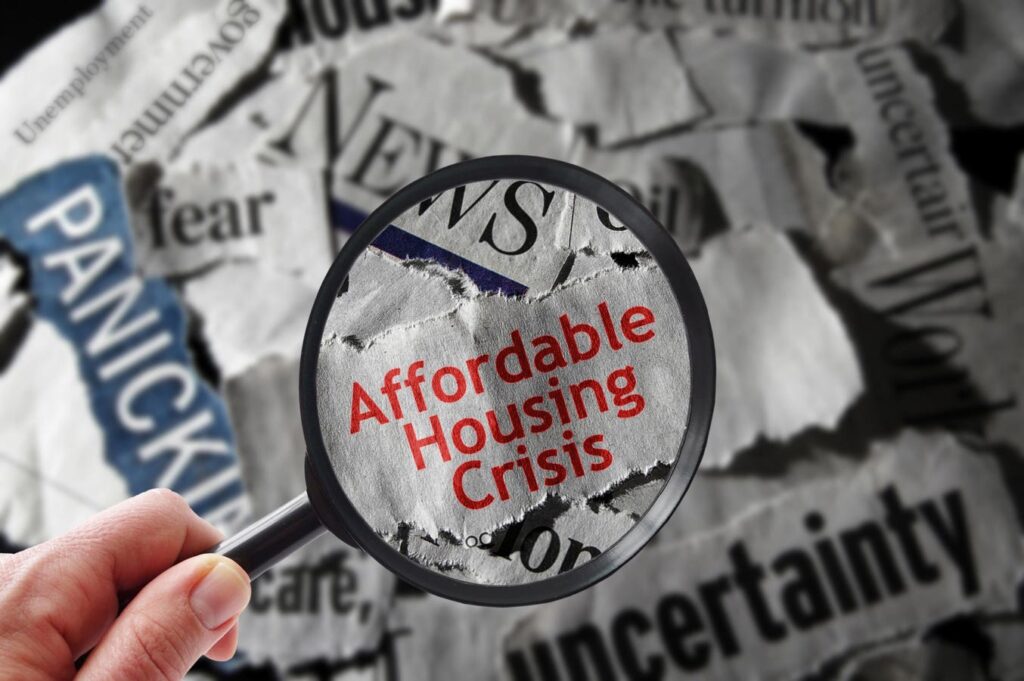Homes are becoming less and less affordable–to buy and to build. USA Today’s Andrea Riquier recently laid out the economic challenges. It isn’t a demand problem, she says. Millennials, the biggest age cohort in the U.S., are in their peak home-buying years from age 28 to 43. They are forming new households at the fastest rate in a decade. Riquier says it’s a supply problem: there just aren’t enough homes. Current estimates of the shortfall are between 3.7 and 4.5 million units. But there are also credit factors in affordable housing affecting supply and demand. These should not be ignored.
First And Foremost, This Is A Credit Market Problem
The last time in memory new U.S. housing stock was so low was 1946, at the end of World War II. This time, the problem is directly related to the collapse of bonds backed by residential mortgages, RMBS, and RMBS collateralized debt obligations, RMBS CDOs, in 2008. Millions of homeowners on both sides of the Atlantic lost homes and jobs. The Federal Reserve and European Central Bank flooded financial markets with low interest money to pump the economy, and national governments borrowed heavily to shore up their economies, triggering a Eurozone Crisis and sovereign downgrades that particularly affected Greece, Portugal, Ireland, Italy and Spain.
By 2012, their real estate markets and ours were glutted with abandoned residential properties. U.S., banks used accounting tricks to hide the mortgage losses on loans that had stopped paying months or even years before (“limbo losses”). In 2012, my firm produced a forensic analysis estimating about $1 trillion in hidden cumulative losses.
Credit Factors That Drove Affordable Housing From Feast To Famine
By 2012, as the mortgage market began to clear, individual speculators began pooling their savings to purchase and flip single distressed units when they became available. At the same time, the governments of Spain, Portugal, Ireland and elsewhere, set up Golden Visa programs that offered preferential tax terms to foreigners willing to invest in distressed homes. A “good idea at the time,” Golden Visas were later blamed for putting home ownership out of the reach of locals, and the programs were scuttled. Spain ended its officially on January 3, 2025.
Penny-ante speculation gave way to larger scale buying in 2013 as private equity firms and the U.S. Federal Housing Finance Agency, co-developed a REO-to-Rental (buy-to-let) structure for using other people’s money to buy up distressed bank real estate-owned properties at inflated prices, recondition them and rent them out. Pension funds and other REO-to-Rental investors bet that the net present value of future rental collections would be more than enough to cover the original sale price. The same private equity firms brought buy-to-rent strategies to Spain, as I wrote here last year.
In the U.S., this credit market practice continues into the present and contributes to the scarcity of affordable homes for sale. In a 2024 letter to former FTC Chair Lina Khan, Congressman Pat Ryan (NY-D) claimed private equity bought 26% of the 2023 supply of affordable homes, and he projected that by 2030 the percentage would grow to 40%.
Another contribution to scarcity is the increasing unwillingness of homeowners to give up the low-cost mortgages they “locked into” in the past, from a belief that mortgage rates will not return to QE or pandemic levels soon, or ever, in their lifetimes–especially if they are Boomers.
Credit Factors In The Supply Chain Also Impact Affordable Housing
Before 2o08, the last big change in U.S. new housing inventory happened between 1945 and 1946, when the troops came home from World War II, and new home starts rose from 8.4 to 26.4 per 1000 households. The reverse happened in 2008, as starts per 1000 households reverted to 1945 levels, 8.2.
The ability of the industry to mobilize resources in 1946 is described in terms eerily similar to now: “…There was a severe shortage of building materials throughout most of 1946 as the materials industries struggled to expand to full production after sinking to a relatively low output in the later war years. The obstacles to increased production were…shortages of raw products, equipment and repair parts, and of certain skilled labor.”
Today credit factors for the construction building, like land and construction material costs, are rising. The labor pool has shrunk by over a million construction workers since 2007, and immigrants now make up 31% of construction industry workers. Would-be locals found employment elsewhere and are not in place to take over from experienced workers who have worked past their prime and want to retire.
Credit factors in affordable housing are also shutting off opportunity for aspiring home buyers. Fixed-rate, 30-year mortgages are currently 6.94%, just under the post-Covid era peak of 7.5%, and the level in 2000. Average incomes and employment rates today are slightly higher than in 2000, but median home prices are 160% higher, and homeowner’s insurance is 265% higher than in 2000. First-time homebuyers in the low- to middle-income brackets are exposed to twice the level of price inflation reported in the Consumer Price Index according to Gene Ludwig, founder and chairman of LISEP. Another invisible cost for low income mortgagors putting less than a 20% downpayment is private mortgage insurance, which adds 0.4% to recurrent charges.
Policy Uncertainty Is A Credit Market Problem Too
Changes in leadership can bring out different policy priorities, causing uncertainty about regulations, laws, and economic strategies that constrain business choices, and companies will delay their investment decisions until the best way forward becomes clearer.
Sometimes change is perceived positively in equity markets, but it is usually a negative for credit markets, which thrive on stability. Right now, given the heavy reliance of the construction industry on immigrant labor and imports of construction materials, the Trump administration’s announced intentions to carry out “the largest deportation operation in history” and impose tariffs, on goods from countries that supply critical construction materials, like lumber from Canada, gypsum from Mexico, and steel and aluminum from China, do not signal positive credit factors.
Small wonder the National Association of Home Builder-Wells Fargo index of confidence, the Housing Market Index, dropped sharply in January 2025, to levels only seen in 2023, when the Fed raised rates 550%, and before that, 2013. The main variables of HMI, interest rates, inflationary pressures, employment levels and material costs, coincide with the main credit factors in affordable housing.
Read the full article here
















